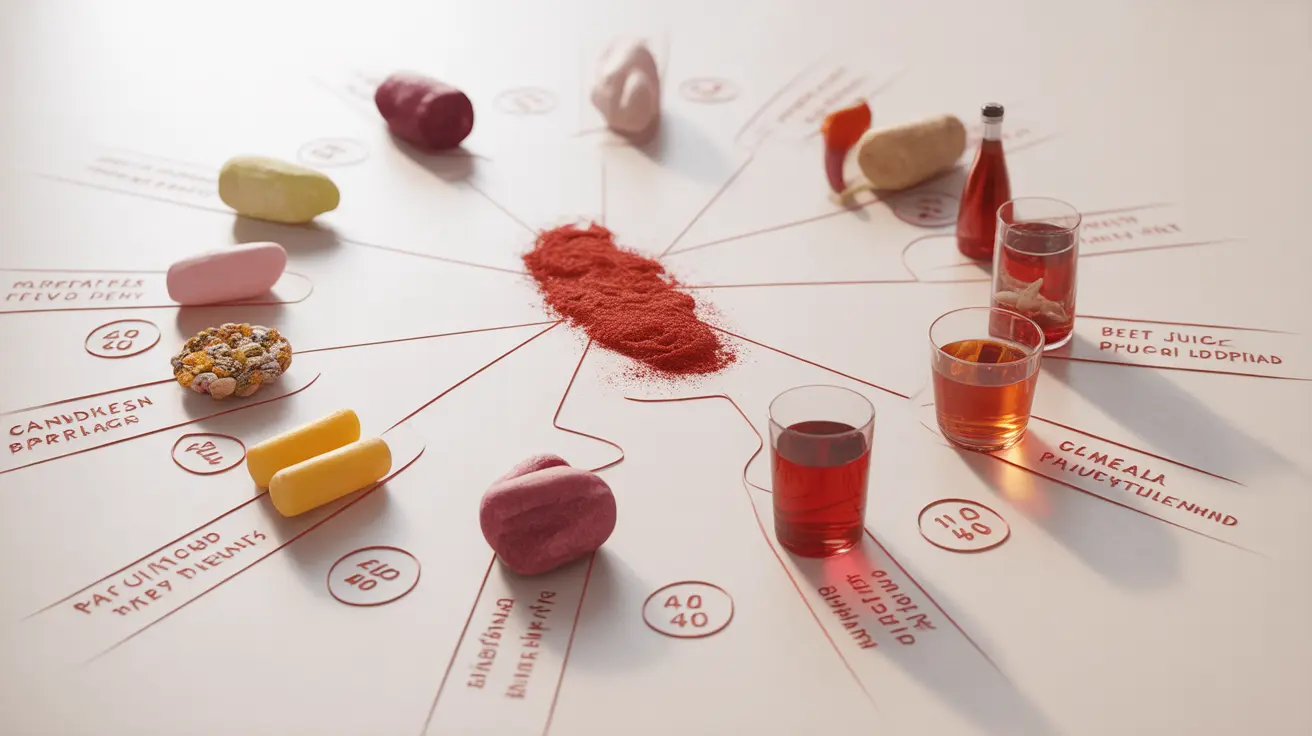Red 40, also known as Allura Red AC, is one of the most commonly used artificial food colorings in the United States. While approved by the FDA for use in foods and beverages, growing concerns about its potential health effects have led many consumers to question its safety and seek alternatives. Understanding the risks, symptoms of sensitivity, and ways to avoid this synthetic dye is crucial for making informed dietary choices.
This comprehensive guide explores the latest research on Red 40, its potential impact on health, and practical ways to identify and avoid products containing this controversial food coloring.
Understanding Red 40 and Its Uses
Red 40 is a synthetic food dye derived from petroleum byproducts. It's commonly found in a wide range of products, including:
- Candies and sweets
- Flavored beverages
- Cereals
- Snack foods
- Dairy products
- Medications and supplements
While it serves no nutritional purpose, Red 40 is added to foods primarily for aesthetic appeal and consumer acceptance.
Health Concerns and Allergic Reactions
Some individuals may experience adverse reactions to Red 40, ranging from mild to severe. Common symptoms of sensitivity include:
- Hives or skin rashes
- Gastrointestinal distress
- Headaches
- Facial swelling
- Difficulty breathing (in severe cases)
If you suspect a sensitivity to Red 40, keeping a detailed food diary and consulting with a healthcare provider can help identify the connection between consumption and symptoms.
Impact on Children's Behavior
Research suggests a possible link between artificial food dyes, including Red 40, and behavioral changes in children. While not all children are affected, those with existing attention-deficit/hyperactivity disorder (ADHD) may be particularly sensitive to these synthetic colorings.
Safety Guidelines and Consumption Limits
The FDA has established an Acceptable Daily Intake (ADI) for Red 40, though exact amounts vary based on body weight. Current research continues to evaluate long-term safety and potential health impacts. Following these guidelines can help minimize potential risks:
- Read ingredient labels carefully
- Choose natural alternatives when possible
- Monitor personal reactions to foods containing Red 40
- Consider organic options that prohibit artificial colorings
Natural Alternatives to Red 40
For those looking to avoid Red 40, several natural alternatives can provide similar coloring effects:
- Beet juice or powder
- Paprika
- Pomegranate juice
- Carmine (though not vegetarian)
- Strawberry or raspberry juice
- Annatto
Frequently Asked Questions
What are the common symptoms of a red 40 food dye allergy?
Common symptoms of a Red 40 allergy or sensitivity can include hives, itching, swelling, stomach upset, and in some cases, difficulty breathing. Some individuals may also experience headaches or skin flushing after consuming products containing this dye.
Can red 40 in foods cause or worsen hyperactivity in children with ADHD?
Some studies suggest that Red 40 and other artificial food dyes may exacerbate hyperactive behaviors in children, particularly those already diagnosed with ADHD. While not all children are affected, parents of sensitive children often report behavioral improvements when artificial dyes are removed from their diet.
Is red 40 considered safe to eat, and what are the recommended daily limits?
The FDA considers Red 40 safe for consumption within established limits. The Acceptable Daily Intake is 7 mg/kg of body weight per day. However, actual consumption levels vary widely, and some individuals may be more sensitive than others.
How can I avoid red 40 in foods and what are safer alternatives?
To avoid Red 40, carefully read product labels and look for foods colored with natural alternatives like beet juice, paprika, or fruit-based colorings. Choose organic products, which prohibit artificial dyes, and consider making homemade versions of commonly dyed foods using natural ingredients.
Does consuming red 40 increase the risk of long-term health problems like cancer or inflammation?
While some studies have raised concerns about potential long-term health effects of Red 40, including inflammation and cancer risk, current evidence is not conclusive. Research is ongoing, and regulatory agencies continue to monitor new findings regarding its safety. Those concerned about potential risks may choose to limit their exposure to artificial food dyes.




